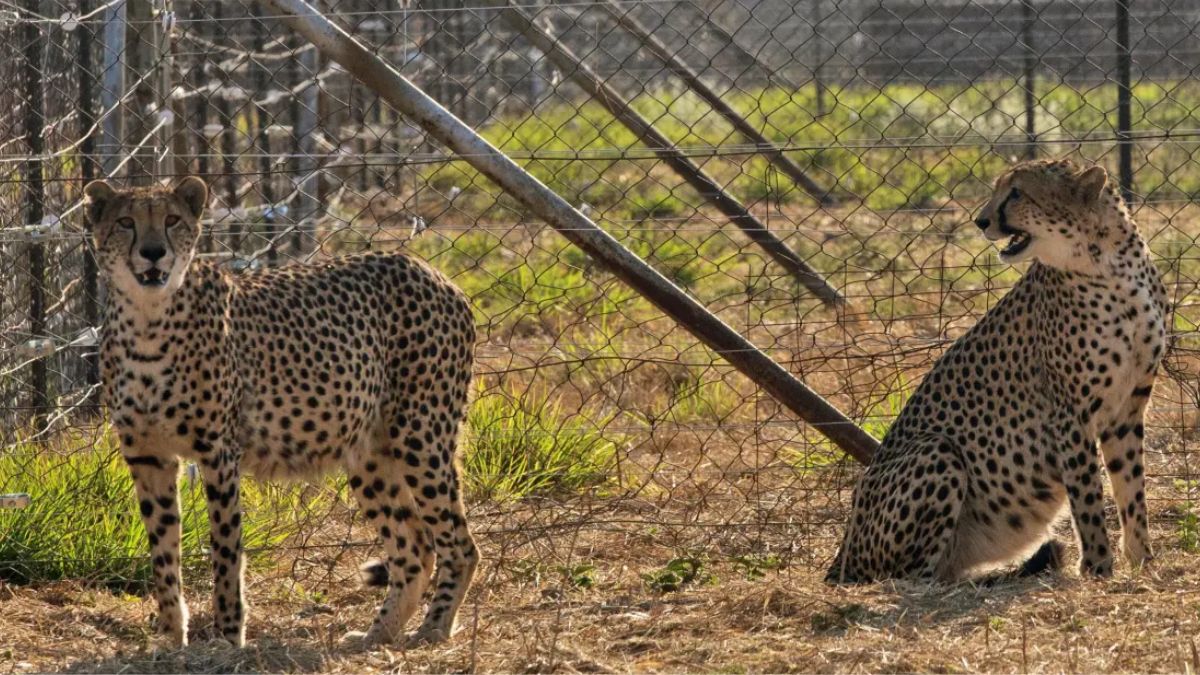A few days ago, scientists from US-based Colossal Biosciences revealed they had brought the dire wolf back from extinction after over 10,000 years.
They announced the birth of three dire wolf pups - Romulus, Remus and Khaleesi. The two males are six months old, while the female is two months old.
Now, the Birbal Sahni Institute of Palaeosciences (BSIP) in Uttar Pradesh’s Lucknow is working with the Zoological Survey of India (ZSI) to ‘revive’ the Indian cheetah , which was last seen in the early 1950s.
But are cheetahs not already present in the country?
At present, the only cheetahs in India are those that were brought from Namibia and South Africa during 2022 and 2023. Of the 20 that were moved to Madhya Pradesh’s Kuno National Park, eight have died so far, along with five cubs born here.
In this explainer, we explore how scientists plan to revive the Indian cheetah’s unique traits, what led to their disappearance, and a quick look at how the dire wolf was brought back in the US.
How India plans to bring back the Indian cheetah
The Birbal Sahni Institute of Palaeosciences and the Zoological Survey of India are working to bring the Indian cheetah back.
According to a report by The Times of India, BSIP is nearing the end of its whole genome sequencing (WGS) project for the Indian cheetah. The team plans to use gene editing to recreate the extinct animal’s traits.
Their plan involves inserting these edited genes into the embryo of an African cheetah and using surrogacy to help the species return.
Niraj Rai, a senior scientist at BSIP leading the research, told TOI: “We have samples of all extinct Indian cheetahs and are in the final phase of its whole genome sequencing (WGS) that will offer a comprehensive analysis of the cheetah’s entire DNA, enabling the identification of genetic variations that may have led to disease or increased disease risk, eventually leading to its extinction.”
Impact Shorts
More ShortsGene editing would help reintroduce the specific traits of the Indian cheetah, using an approach similar to the one taken by American company Colossal Biosciences to revive the dire wolf.
Earlier studies had already isolated mitochondrial DNA (mtDNA) from both Indian and African cheetahs, allowing researchers to compare and study their genetic differences.
Why cheetahs disappeared from India
Cheetahs were once widely found across India. The first cheetah to be bred in captivity anywhere in the world was in India, during the time of Mughal emperor Jahangir in the 16th century.
His father, Akbar, wrote that there were 10,000 cheetahs during his reign, including 1,000 in his court.
Cheetahs are believed to have vanished from India in 1947 when Maharaja Ramanuj Pratap Singh Deo of Koriya, Surguja, in Chhattisgarh, hunted and shot the last three known Asiatic cheetahs in the country.
The Indian government officially declared the species extinct in 1952.
Back then, cheetahs were found in most parts of the country, except the high-altitude regions. They were often hunted for reward or for sport. It is reported that many cheetahs were killed during the British period, especially when they entered villages and attacked livestock.
While over-hunting was a key reason behind their disappearance, the shrinking of grasslands and loss of prey also added to their decline, according to The Indian Express.
Since the 1940s, cheetahs have also disappeared from 14 other countries: Jordan, Iraq, Israel, Morocco, Syria, Oman, Tunisia, Saudi Arabia, Djibouti, Ghana, Nigeria, Kazakhstan, Pakistan and Afghanistan.
A genetic study by the Centre for Cellular & Molecular Biology (CCMB) in Hyderabad had traced the origins of the extinct Indian cheetah.
According to the study, the North-East African cheetah split from both the South-east African and Asiatic cheetahs around 100,000 to 200,000 years ago. The South-east African and Asiatic cheetahs then separated from each other between 50,000 and 100,000 years ago.
How cheetahs were reintroduced in India
As part of the first-ever transcontinental effort to move big cats, African cheetahs were brought to India and released into Kuno National Park.
In September 2022, the first group of eight cheetahs arrived from Namibia. This was followed by a second group of 12 cheetahs that came from South Africa in February 2023.
Talks around bringing cheetahs back to India began in 2009, led by the Wildlife Trust of India.
According to the ‘Action Plan for Reintroduction of Cheetah in India’, the aim is to bring in 12 to 14 cheetahs each year from African countries like Namibia and South Africa over a five-year period to build a stable population.
How dire wolves were brought back in the US
Dire wolves, which disappeared more than 10,000 years ago, were larger than today’s grey wolves, which are their nearest living relatives.
On April 7, scientists at Colossal Biosciences revealed that they had successfully created three dire wolf pups named Romulus, Remus and Khaleesi.
To understand the features of dire wolves , researchers studied ancient DNA taken from fossils. They then used blood cells from a grey wolf and applied CRISPR technology to alter 20 different parts of its genetic code, Colossal’s chief scientist, Beth Shapiro, said.
That genetic material was placed into an egg cell from a domestic dog. Once developed, the embryos were implanted into surrogate dogs, and 62 days later, the pups were born.
“I could not be more proud of the team,” Colossal’s CEO Ben Lamm said. “This massive milestone is the first of many coming examples demonstrating that our end-to-end de-extinction technology stack works.”
With inputs from agencies
)